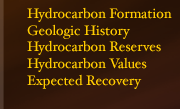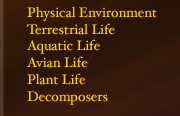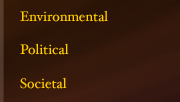
Terrestrial Life - Central Arctic Caribou
General Information
Success in reproduction is mainly related to the females' nutrition and calf production is highly positively correlated to fat content of sexually mature females during the autumn . As researched near the Sagavanirktok River near the petroleum extraction zone, due to the roads built the herd was not able to reach their usual habitats and food supply thus leading to a reduction of female body fat and calf production. (Remon Pelinsky, 1986) The reduced nutrition of the females near the oil production areas reduced the amount of pregnancies one year after another.
Caribou’s Migratory Paths: Map
(Map: http://www.r7.fws.gov/nwr/arctic/caribouyear.html)
Sensitivities
Evidence from oil extraction in Prudhoe bay has demonstrated its drastic effects on the caribou's habitat. From the 1970s to 1980's the Central Arctic Caribou made use of the areas of the coastal plane near drilling sites (Remon Pelinsky, 1986) During the calving period, caribou showed increasing avoidance of areas near drilling sites and changed their migratory routes accordingly. Within the main industrial complex, the number of caribou severely decreased by an estimated 78% in Caribou use and 90% in migratory paths. These were only some of the effects Prudhoe Bay drilling had over the past few decades
Proposal: Like all the species in the 1002 region, calving and natural habitat will change. The Central Arctic Caribou's migratory paths and calving productivity will most likely decline as was the case near the Prudhoe bay’s drilling sites. With the loss of their preferred habitat, sexually mature females will have less body fat and thus have lower reproduction rates. Exactly how much impact there will be depends on the methods of oil extraction and the amount of roads built and the location of those roads.
Reference:
1. Adamczewski, J. Z., C. C. Gates, R. J. Hudson, and M.
A. Price. 1987. Seasonal changes in body composition of mature female
caribou and calves (Rangifer tarandus groenlandicus) on an arctic island
with limited winter resources. Canadian Journal of Zoology 65:1149-1157.
2. Joe C. Truett and Stephen R. Johnson. (2000). The
natural history of an Arctic oil field : development and the biota. San
Diego, Calif. : Academic, c2000.





